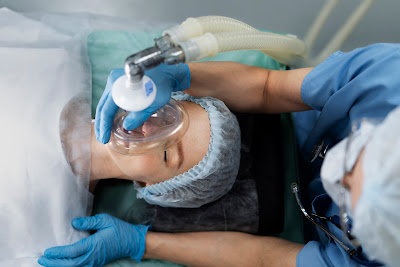Optimizing Critical Care: A Comprehensive Guide to Enhancing the Assessment for Standard ICU Patients
Fellowship in Critical Care is one of the most important courses in India as it teaches about the general flow of assessment for a standard ICU patient who is intubated with an arterial line and is on multiple drugs. In a clinical setting your assessments need to be based on the patient’s presenting problem and current condition. So first we introduce ourselves to the patient and if present the family as well. Then slowly and steadily start to explain what you are going to do; this should be done regardless of the patient’s level of consciousness. As with any initial interaction with a patient, ensure that you are following correct infection prevention and control policies with hand hygiene and appropriate personal protection equipment. Even during a potential short interaction, you will need to collect important information about your patient like is he/she awake and alert, does the patient focus on you when you introduce yourself, does the family appear stressed.
Fellowship Course in Critical Care Medicine guides you on how to do the basic neurological assessment of a patient that starts with consists of four components, level of consciousness, pupils, vital signs including pain and motor strength. These will be demonstrated for both the responsive and non-responsive patient. Its important to remember that the goal with the neurological assessment is to get the best possible response, which means whenever possible you should remove or reduce sedation prior to assessment. Relying solely on blood pressure or cardiac output to determine adequate circulation can lead to erroneous conclusions. General techniques to assess peripheral perfusion include as with pitot pulses capillary refill and edema and inspection where we look for modeling evidence of bleeding and cyanosis.
Fellowship in Critical care in India teaches the most effective and common techniques used for pulmonary physical assessment are inspection and auscultation. For inspection observe the general appearance and the state of the patient including color such as cyanosis, modelling, pallor, rate rhythm and pattern of breathing, symmetry of chest expansion and the shape of the chest. Thus, inspection should include state of nutrition, symmetry, and posture. Wasting and hallmarks of poor nutrition may indicate chronic disease, poor grooming or slack posture may suggest depression or low self-esteem. Then proceed to more specific examination of the skin, looking for redness or other signs of infection, hair loss, nail thickening, and moles or other areas of pigmentation and inquiries about any recent changes in skin lesions that could indicate early cancer. Inspection also should encompass, in particular, areas that the patient normally would not be able to see, such as the scalp, the back, and the buttocks. The nails and the skin are particularly important in making a diagnosis. Examination of the nails can provide important clues about systemic disease. Clubbing of the nails (broadening of the nailbeds, with curved and shiny nails) may indicate congenital heart disease, chronic obstructive pulmonary disease, bronchogenic carcinoma, or another cardiac or pulmonary condition. Pitting of the nails occurs in about 50 percent of patients with psoriasis. The skin should always be inspected for cancer, though it is sometimes difficult to differentiate a benign mole (nevus) from a cancer. That’s why doing a fellowship course in Critical Care by MedVantage is an essential need for every healthcare professional.




Comments
Post a Comment